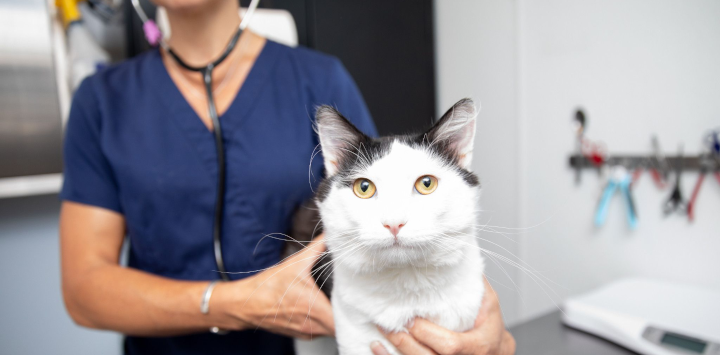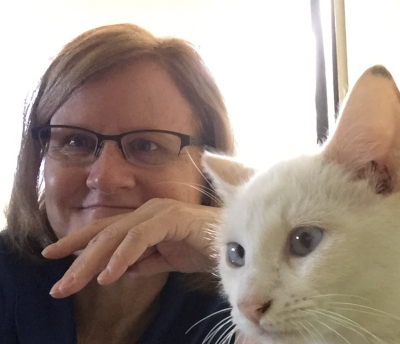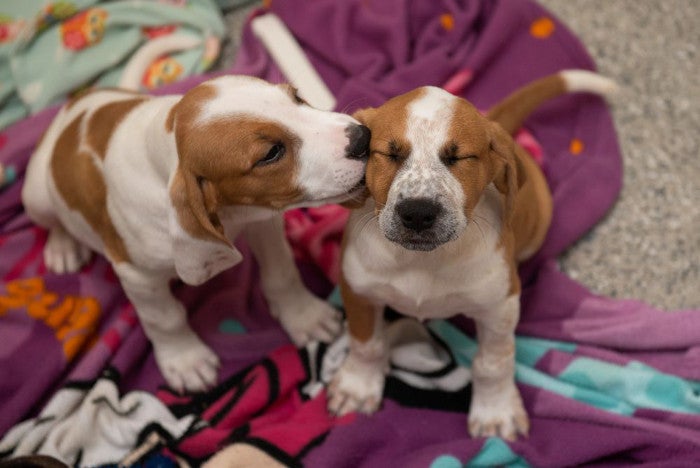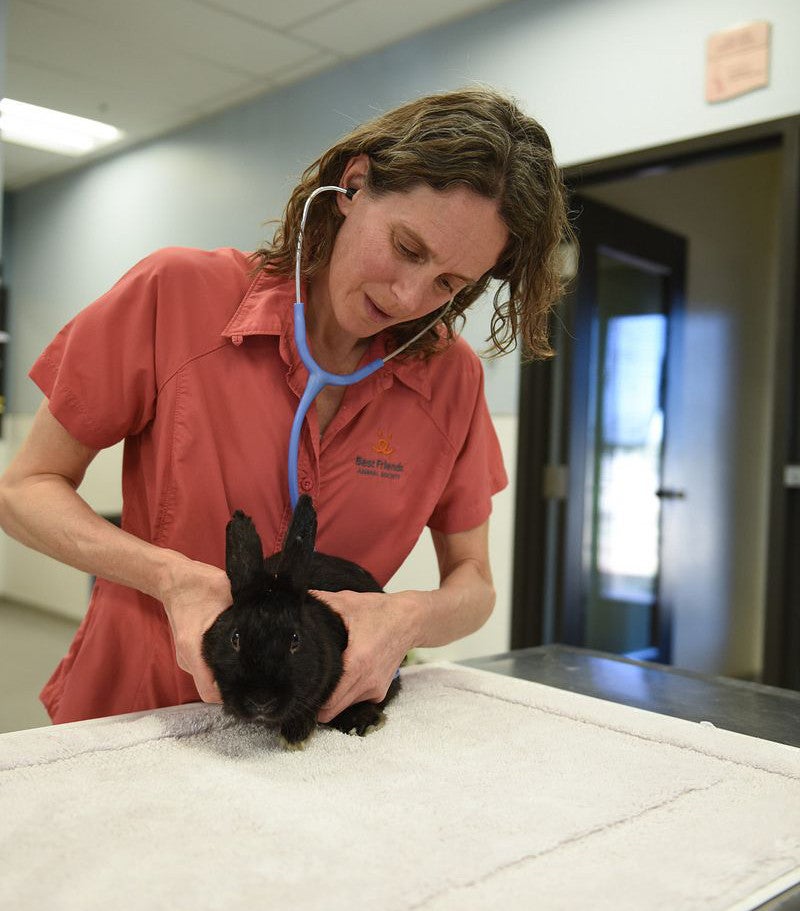
Balancing Needs of Shelter Animals, Community in Times of Crisis
An Interview with Julie Levy
We’ve been talking a lot on these pages lately about the veterinary shortage, how it’s impacting shelters and rescues, and what we can do in the meantime to adapt to the challenge. This week, we are joined by Julie Levy, DVM, PhD, DACVIM, DABVP (Shelter Medicine Practice), to talk about how shelters can balance caring for their organization’s animals with offering veterinary resources to the public to keep pets in homes.  Dr. Levy is the Fran Marino Professor of Shelter Medicine Education at the University of Florida, where she focuses on the health and welfare of animals in shelters, feline infectious diseases and humane alternatives for cat population control. She founded Operation Catnip, a nonprofit university-based community cat trap-neuter-return program that has spayed, neutered, and vaccinated more than 65,000 cats in Gainesville since 1998. In 2008, she joined Dr. Cynda Crawford to found Maddie’s Shelter Medicine Program at the College of Veterinary Medicine, an educational and discovery initiative with a global impact on the care of homeless animals. In 2014, she joined Dr. Kate Hurley to launch the Million Cat Challenge, a shelter-based campaign to save millions of cats in shelters across North America.
Dr. Levy is the Fran Marino Professor of Shelter Medicine Education at the University of Florida, where she focuses on the health and welfare of animals in shelters, feline infectious diseases and humane alternatives for cat population control. She founded Operation Catnip, a nonprofit university-based community cat trap-neuter-return program that has spayed, neutered, and vaccinated more than 65,000 cats in Gainesville since 1998. In 2008, she joined Dr. Cynda Crawford to found Maddie’s Shelter Medicine Program at the College of Veterinary Medicine, an educational and discovery initiative with a global impact on the care of homeless animals. In 2014, she joined Dr. Kate Hurley to launch the Million Cat Challenge, a shelter-based campaign to save millions of cats in shelters across North America.
Liz Finch: Between the growing vet shortage, increasing shelter animal inventory, decreasing spay/neuter capacity and increasing focus on public services, it can feel like shelters are getting crushed from all sides lately.
Julie Levy: All of these factors are colliding to make for a difficult time in meeting the veterinary care of animals in shelters, rescues, and communities. There is a growing shortage of veterinarians and veterinary staff that has been compounded by COVID’s impact on the workforce. There is just not enough time to get all of the critical work done, which leaves staff working under difficult conditions and facing moral stress due to the suffering of animals who they can’t help. That is a big burnout factor and it’s driving vets and staff away from shelter care and the veterinary profession overall.
In the face of such bleak reality, what kind of advice are you giving to shelters to get through this time?
This is a hot topic in the veterinarian discussion groups right now. Veterinarians and directors are not always on the same page regarding what is critical work and what can be put on pause. How do you choose when everything is important? I recommend that shelters focus first on the animals in their care. Those animals should not be neglected in order to care for animals belonging to others. After assuring that the needs of their own animals are being met, shelters should prioritize services according to the animals at greatest risk of suffering harm or contributing to shelter intake and euthanasia. That may vary depending on the region, but in the Sunbelt states it tends to be community cats, large dogs, and dogs with behavior concerns.
Not to mention those born on the streets represent future potential intakes at the shelter
I completely agree. I am concerned about the diminishing capacity spay/neuter clinics and shelters have for community cats. Spay/neuter of cats is one of the easier and cost-effective ways to address a key target for animal welfare. Where spay/neuter capacity exists, I would focus it intensely on the main sources of animals that are overwhelming shelters: free-roaming cats, female dogs and cats, large-breed dogs. Spay/neuter clinics have not recovered to their levels of surgery performed in 2019, and it’s likely that we will see negative impacts from that for years to come. For example, spaying free-roaming community cats not only benefits the cats themselves but on a much larger scale, it prevents the birth of more kittens, most of which will die before even reaching adulthood. Trap-neuter-return programs are urgently needed to prevent the suffering of those kittens and to decrease shelter intake of cats.
Last week, Sue Cosby’s editorial addressed the issue of releasing animals without spaying and neutering them. What’s your stance on this?
It’s ideal to spay and neuter animals before they are adopted, but when surgery capacity is reduced, it is better to release the animals to their new home with good information and a signed agreement to neuter the pets within a specific amount of time. Holding animals in the shelter extra days in order for them to be sterilized before they are released contributes to stress, crowding, and disease.
How about managing all the other medical needs of a shelter population?  One of the most important roles of the shelter veterinarian is to establish solid protocols that the staff can carry out. In these times of workforce shortages, everyone should be working at the top of their license. Staff can be trained on written protocols for intake exams and preventive care that will meet most of the needs of the animals. That will free up the vet to spend their time on critical needs, such as disease surveillance, emergency care of injured and sick animals, and cruelty examinations. For example, every animal must be vaccinated at or before the time of intake to the shelter. Infectious diseases spread rapidly in shelters when animals are not protected. At least partial protection begins to form soon after vaccines are administered, and in areas with high rates of infectious disease, there is a race between effective immunization and disease threat. Delaying vaccination overnight or even a few hours can make the difference between life and death. These routine vaccines can be administered by intake staff and do not need to wait for the veterinarian to be available. However, full protection takes days to weeks to develop, so staff also need to be on the lookout for any signs of illness and veterinarians need to have time for rounds and disease surveillance. Staff can also be trained to perform routine medical procedures such as intake examinations, heartworm tests, fecal examinations, and skin scrapes, and to initiate a treatment protocol prescribed by the veterinarian. When staff notices something unusual, they can alert the veterinarian. In this way, the veterinarian is able to focus their limited time on the animals that need them most.
One of the most important roles of the shelter veterinarian is to establish solid protocols that the staff can carry out. In these times of workforce shortages, everyone should be working at the top of their license. Staff can be trained on written protocols for intake exams and preventive care that will meet most of the needs of the animals. That will free up the vet to spend their time on critical needs, such as disease surveillance, emergency care of injured and sick animals, and cruelty examinations. For example, every animal must be vaccinated at or before the time of intake to the shelter. Infectious diseases spread rapidly in shelters when animals are not protected. At least partial protection begins to form soon after vaccines are administered, and in areas with high rates of infectious disease, there is a race between effective immunization and disease threat. Delaying vaccination overnight or even a few hours can make the difference between life and death. These routine vaccines can be administered by intake staff and do not need to wait for the veterinarian to be available. However, full protection takes days to weeks to develop, so staff also need to be on the lookout for any signs of illness and veterinarians need to have time for rounds and disease surveillance. Staff can also be trained to perform routine medical procedures such as intake examinations, heartworm tests, fecal examinations, and skin scrapes, and to initiate a treatment protocol prescribed by the veterinarian. When staff notices something unusual, they can alert the veterinarian. In this way, the veterinarian is able to focus their limited time on the animals that need them most.
Like giving rabies vaccines?
Yes, there should be some system in place for assuring rabies vaccines are administered, either in the shelter or at a private veterinarian, since only veterinarians are permitted to administer rabies vaccinations in most states. The staff should administer the DHPP and FVRCP vaccines at or before intake, and then the veterinarian can administer the rabies when they are available, such as at the time of spay/neuter, during rounds, or at the time of adoption. Shelter software can be very useful for generating daily to-do lists that can be delegated to different staff. These lists are also essential for identifying missing or delayed treatments so that they can be filled in and systemic issues with provision of consistent care can be identified.
Let’s talk about how non-vet staff can alleviate the work of the vet team.
Every interaction that the animal care team has with shelter residents — from cleaning the cages in as stress-free a manner as possible to providing enrichment items to making sure a shy cat is given a hidey box to be more comfortable — should be designed to keep them as mentally and physically healthy as possible. Then, hopefully, fewer animals will even need vet care beyond the basics. Almost every aspect of shelter operations ultimately impacts animal health and well-being, and we are in a time when the length of stay for our animals is increasing due to more intakes, fewer adoptions and the delay in spay/neuter that we talked about previously. That causes crowding and packing multiple animals into spaces that are only built for one. As you can imagine, confining multiple unfamiliar animals in a small space creates dangerous conditions that can lead to fights, competition for food, and terror. I know of several veterinarians who loved their jobs, but eventually left because they could not reconcile their own ethical compass with the conditions of animals in the shelter.
I think the same can be said for other shelter staff, who may be feeling overwhelmed and helpless at those same conditions.  For these reasons, I strongly suggest that all staff complete the Fear Free Shelters certification, which can inspire everyone on the team to recognize and prioritize animal welfare. I know that when staff are already running on empty, they can’t imagine how to add anything more into the workday to address behavior issues or provide enrichment. Fear Free Shelters shows how to weave concrete improvements into everyday operations. I think that Fear Free training should be part of onboarding; it only takes about 12 hours and can even be completed online by staff who might still be working at home due to COVID.
For these reasons, I strongly suggest that all staff complete the Fear Free Shelters certification, which can inspire everyone on the team to recognize and prioritize animal welfare. I know that when staff are already running on empty, they can’t imagine how to add anything more into the workday to address behavior issues or provide enrichment. Fear Free Shelters shows how to weave concrete improvements into everyday operations. I think that Fear Free training should be part of onboarding; it only takes about 12 hours and can even be completed online by staff who might still be working at home due to COVID.
Let’s shift topics slightly to a tricky one: we see a movement toward the addition of more services that will keep pets in homes and out of the shelter, but many of these are based around providing vet care. Isn’t this sending mixed messages?
Directors are wrestling with how to deploy the limited vet resources they have, while also wondering how they can follow industry trends and start new programs that avoid the need for shelter intake in the first place. This is a real dilemma and it’s not likely to be solved in the near term. It keeps me up at night. In the long term, these proactive programs are more humane and effective. With that said, I still believe the needs of the animals owned by the shelter should come first. Shelter veterinarians should not have their time diverted to public clinics if their own shelter animal care is lacking. Microchip and vaccine clinics are valuable, but not when animals are left lying in runs with untreated injuries, diseases, and emotional distress.
For those that have already started down that road, how do you suggest they deal with public backlash if they reverse course and stop the programs?
Shelters must be transparent about the hardships they are facing. It’s common to avoid talking about how dire the situation is because the funders might become disheartened and misguided advocates might retaliate on the shelter and its individual employees. Those are very real concerns. It’s easy to say “tell your story,” but it’s a lot harder to do. It’s important to explain to the public why some popular and important services have to be paused, otherwise, it can sound like the shelter just doesn’t care. Shelters are in crisis, and they can’t meet all the needs at once, and they have to be willing to say that and repeat it over and over. The whole animal welfare industry can help by sharing that message, and the public can help by alleviating the burden through fostering and transporting to get animals out, and donating both supplies and money to support out-of-budget vet care. It’s also an opportunity to outsource veterinary care to per diem veterinarians and private veterinary clinics so that the pool of providers is larger. For example, relief veterinarians are often available to come in for the day to conduct a public vaccine clinic, leaving the shelter veterinarian available to focus on the animals in-house or in foster. However, I don’t want to sugarcoat the challenges of recruiting outside veterinarian help. While we’ve long advised shelters to outsource their routine veterinary care or spay/neuters to cover their gaps in staffing, now the high-volume clinics and private practices are backed up too. Even the public is having trouble accessing top-dollar care and emergency clinics are cutting back on hours. There is no magical, foolproof method to getting outside clinics involved. First, shelter directors should meet with the local veterinarians, who may not know the reality the shelter is facing. They may not know how they can fit doing work for a shelter into their normal flow, but it starts with a conversation. Some might help for a day on a relief basis or agree to take in a critical care case once in a while. I think a lot of shelters assume it will cost more to outsource, but many of them aren’t looking at the true costs or opportunity costs of performing veterinary care in-house. For those that have a budget line item for a veterinarian position that has been sitting empty, those are funds they can use to hire veterinarians for a few days a week or a month on a per diem basis.

Liz Finch
Senior Writer
Best Friends Network
If you enjoyed this editorial, you can find our complete catalog of editorials here.